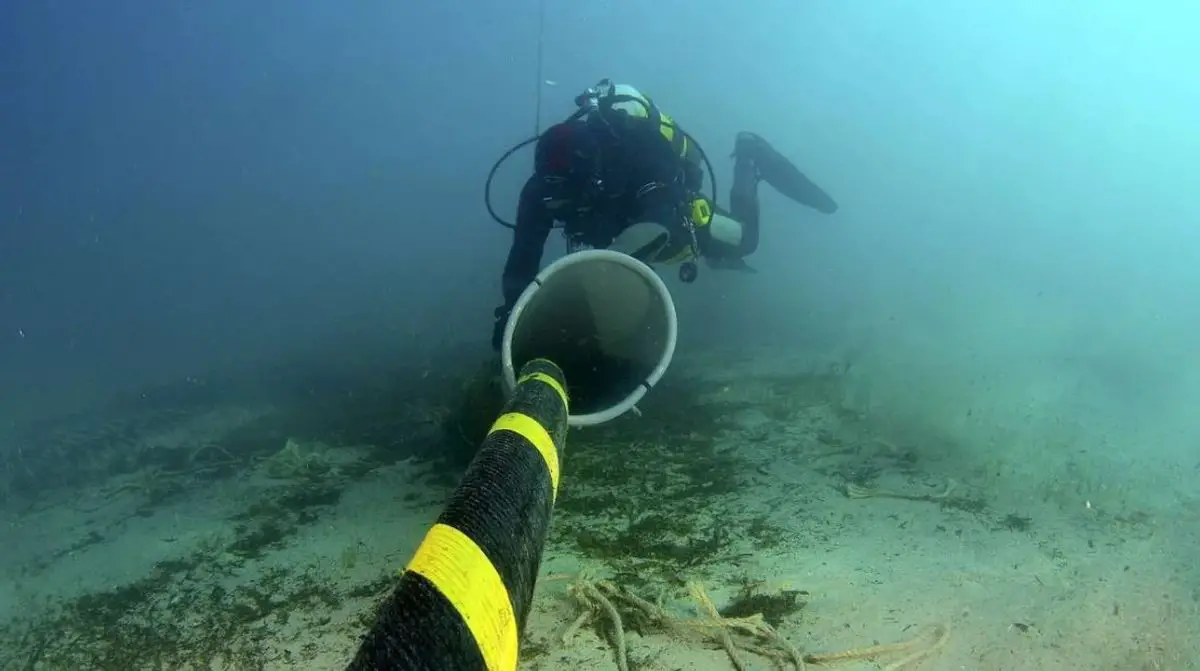Google also assists in life-saving research, and it looks like its undersea cables could soon be able to warn of earthquakes or tsunamis with an epicenter in the ocean.
At this point, no one is going to discover Google and its endless research and development projects, some as a bottomless pit of wasted resources and others with much more tangible, interesting, and conscientious objectives than the last one about its submarine cables.
And yes, friends, as we were told a few days ago by the folks at The Verge, it seems that Google wants its submarine cables to serve for more than just transporting data at the speed of light around the planet, tracking tsunamis and earthquakes that may occur in the high seas.
The truth is that the research is not properly Google’s but Professor Zhongwen Zhan’s, who started his tests during 2020 to get one of Google’s fiber-optic cables to successfully detect some nearby earthquakes thanks to the distortions that occurred in the light pulses that carry data along the cable itself.
Google’s undersea cables to anticipate earthquakes and save lives
The thing promises and is that this Professor of Geophysics at the California Institute of Technology has already dared to publish the research in the prestigious journal Science, stating that it is possible to “find a less expensive way to cover the entire ocean with geophysical sensors” thanks to the telecommunications infrastructure that is already deployed around the planet.
The idea is to take full advantage of the functionality of fiber optic cables and to do so without interfering with their main functions by taking advantage of the light signals that carry data and their orientation, which is deflected when an earthquake occurs allowing Google to detect these variations and correct them automatically.
These corrections are precisely the data that Google will share, with changes in the “polarization state” of the light that can be used by seismologists to study earthquakes and possible associated tsunamis.

Google says it is thrilling to be able to collaborate on projects of this caliber that promise to help the world and announced that it will continue to develop the technology with Zhan: “We are honored and excited about the possibility of collaborating with the optical, undersea, and seismic research communities to use our entire cable infrastructure for greater social benefits.”
The truth is that the vast majority of seismographs used by earthquake researchers are on land, so this approach is very novel and differential to be able to further detect and study offshore earthquakes, as well as their consequences in the form of large waves or tsunamis.
Moreover, it is possible to do so without installing any additional devices, as undersea cables are already crossing the oceans to interconnect the world, and Zhan and his team have demonstrated that they can document up to 20 moderate-scale earthquakes using just the 10,500-kilometer Curie cable that Google has stretched between Los Angeles and Chile, and the variations of its light pulses.
We hope that this new approach can give people a better chance of detecting such events early on so that the population has more time to react. It’s a perfectly safe way to leverage existing infrastructures to do something good for society and science. Zhongwen Zhan.
Also, it appears from the study that it is also possible to detect large storm surges, so the possibilities are much greater still and could even protect ships on the high seas or coastal populations.
Obviously, there is still a lot of work ahead before this development can materialize worldwide, although everything achieved so far is very promising and certainly the cables are ready to send warnings from the middle of the ocean much faster than any other device…





